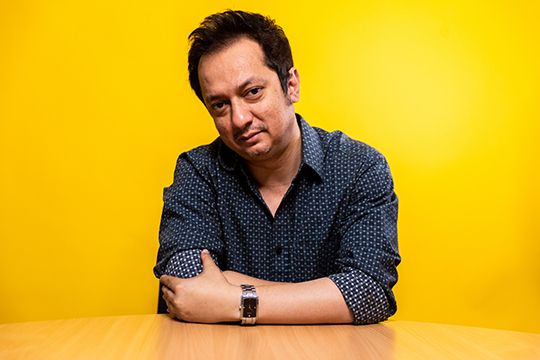For tens of thousands of temples destroyed by invaders and tyrannical rulers, at least one should be rebuilt as a symbol of civilisational resistance
In the book Hindu Temples: What Happened to Them — essays compiled and edited by historian Sita Ram Goel — the first chapter is written by a certain eminent editor of those times. In this essay, Hideaway Communalism, this editor shows how a book written in Arabic and Urdu by a rector of the Nadawtul-Ulama in Lucknow mentioned many historic mosques that were built on destroyed temples. But these references were omitted by the rector’s son and Islamic scholar Ali Miyan from the English translation.
“The fact that temples were broken and mosques constructed in their place is well known. Nor is the fact that the materials of the temples — the stones and idols — were used constructing the mosque, news,” the editor writes. “This was the way to announce hegemony…this was the way strike at the heart of conquered — for in those days the temple was not just a place of worship; it was the hub of the community’s life, of its learning, of its social life. Their real significance…lies in the evasion and concealment they have spurred.”
The author of this is none other than Arun Shourie. He now exists as a bitter man and trick pony the anti-Narendra Modi camp unleashes on occasions. Like other matters, his seminal insights on the massive destruction of Hindu temples by Muslim invaders and rulers may have changed.
But what Shourie wrote at that time was right, and it is right even today. Damn right.
In the ongoing 1,000-year battle over demography, invaders have destroyed thousands of temples in India to drive in fear, disrupt our social fabric and inspire surrender to a foreign culture. In what is now Afghanistan, Pakistan, Bangladesh and in places further east, they succeeded. By the J&K government’s own admission in 2012, 208 temples had been damaged or destroyed just in Kashmir since the early-’90s days of militancy.
Also every place where demographic change happened because of Islamic or Christian invasions and conversions, entire cultures and nations have succumbed. Little living and breathing is left of Mayan, Aztec, Zoroastrian, Egyptian civilisations. Entire populations were slaughtered or converted, shrines razed to dust or transformed to the predators’ faith.
India has been a magical exception, but not without serious amputations and bruises.
The reconstruction of a Ram mandir in Ayodhya is needed to tell the world “enough”. Just because India does not invade and take over, it doesn’t mean we have forgotten what happened to us.
A grand Ram temple should be a source of strength for hundreds of threatened cultures across the world. It would be a reminder that tolerance does not mean weakness, that one can rise from defeat and slavery and win back one’s dignity and beliefs. The Ram temple would be a symbol of civilisational resistance.
Thursday’s order paves the way for an early resolution. The courts have found enough evidence of a temple under the mosque structure. Lord Ram’s birthplace in Ayodhya is not just another temple. It is as central to the faith of millions as is Mecca or Jerusalem.
Any attempt to delay a resolution will be political, cynical and a ploy to harm the nation. As in the past, the Supreme Court will surely see through such tactics when it takes up the land title case for hearing on October 29.
And if a mosque is built across the Sarayu, Hindus should be happy to help build it as the metaphorical bridge between India’s two largest communities.
Last Updated Sep 27, 2018, 7:08 PM IST











![Salman Khan sets stage on fire for Anant Ambani, Radhika Merchant pre-wedding festivities [WATCH] ATG](https://static-ai.asianetnews.com/images/01hr1hh8y86gvb4kbqgnyhc0w0/whatsapp-image-2024-03-03-at-12-24-37-pm_100x60xt.jpg)
![Pregnant Deepika Padukone dances with Ranveer Singh at Anant Ambani, Radhika Merchant pre-wedding bash [WATCH] ATG](https://static-ai.asianetnews.com/images/01hr1ffyd3nzqzgm6ba0k87vr8/whatsapp-image-2024-03-03-at-11-45-35-am_100x60xt.jpg)



